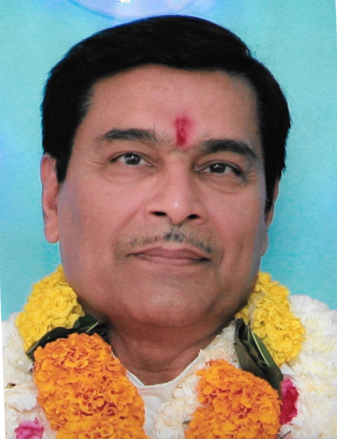From a satsang with Pt. Balram Persad, Spiritual Leader, Om Shakti Mandali
The two central characters of Phagwa, or Holi, are bhakt (devotee) Prahlad and Narasimha Bhagavan, the fierce half-man, half-lion avatar of Shree Vishnu Bhagavan. Prahlad had undergone much pain and suffering in his life as he chose to only worship as the Supreme God, Vishnu Bhagavan, who is omniscient, omnipresent and omnipotent. Even at the point of near death, Prahlad kept his faith in God. This must be true of all devotees, who should be committed to their beliefs when they are truthful, beneficial, uplifting and consistent with scriptural teachings.
In the Vishnu Maha Puraana, Prahlad prays: “And, I say to you, that in this ocean of the world, this sea of many sorrows, Vishnu Bhagavan is your only hope.” He is explaining that despite the challenges that may confront us, we must place our hope in the Divine.
“I ask, what difficulty is there in thinking about Him, who, when remembered, bestows prosperity; and by recalling whom to memory, day and night, all sin is cleansed away. Let all your thoughts and affections be fixed upon Him, who is present in all beings, and you shall laugh at all the worries and cares that confront you.
“If human beings are hostile and indulge in hatred, they are objects of pity to the wise as they are encompassed by delusion. The whole world is but a manifestation of Vishnu, who is identical in all beings. Let us, therefore, lay aside the angry passions and so strive to attain that perfect, peaceful, pure, eternal happiness. What here is difficult to attain when He is pleased? Wealth, pleasure and virtue are things of little moment. (They are temporary.) Precious is the fruit that you shall gather, be assured, from the exhaustless store of the tree of true wisdom. What living creature slays or is slain? What living creature preserves or is preserved? Each is his own destroyer. I wish no evil to anyone, and do and speak no offense. If I behold Keshav, I behold my Lord, and all beings as in my own soul.
“Lord, I have been hated. Weapons were hurled against me. I was thrown in flames and bitten by venomous snakes. Elephants almost trampled me. Poison was given to me. I was thrown into the oceans and heavy rocks were heaped on me. Fire was used to burn me. But whatever evil and ill has been done to hurt me; whatever wickedness has been done to me, Lord, I did not give up. Lord, I put my faith in you. Yes, I have suffered, but I am unharmed.”
Then, Narasimha Bhagavan, hearing this, said, “The sincere heart is filled with trust and faith in Me. Therefore, through my blessing, you shall be free from birth and death.”
Symbolism
Narasimha Bhagavan is depicted as half-man, half-lion. Humans are considered the highest level of the animal chain and all species of creation. The Bhagavad Gita, Chapter 10 states, “Among all quadrupeds (four-legged creatures), I am the lion.” Thus, the lion is also the best of the animal kingdom. The symbolic form of Narasimha Bhagavan means that we should try to be the best in whatever we are and whoever we want to be and then give our best back to the Lord.
His form also represents the evolutionary process. There are 24 incarnations of Vishnu Bhagavan, starting with Matsya, the fish; Kurma, the turtle, through amphibians, and snakes, Shesh Naag; Varaha the boar, then the two-legged incarnations with animal features, Narasimha, and finally the human forms, Vaaman, the dwarf; Shree Raam and Krishna. Narasimha Bhagavan is part of the individual’s evolutionary process as we evolve towards perfection (Maryada Purshottam, Shree Raam).
Narasimha Bhagavan also reminds us that humans are connected to and a part of nature. The five elements of nature are inside of us; as in the macrocosm, so in the microcosm. There is connectivity, harmony and interrelatedness between humans and the universe, and humans and nature. It is nature and the environment that provides us with sustenance, nourishment and accommodation.
It was bhakt Prahlad’s fervent and unshakeable prayer and faith in Vishnu Bhagavan that led to His manifestation but it was also King Hiranyakashipu’s wish to be destroyed neither in the day or night, inside or outside, by man or animal, that led to His manifestation in that particular form as the fierce half-man, half-lion, Narasimha Bhagavan.



